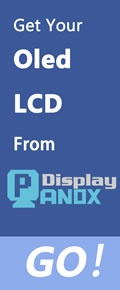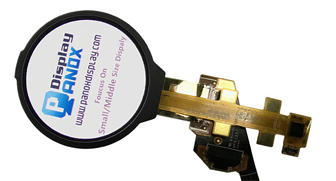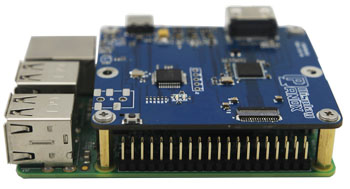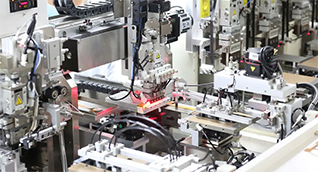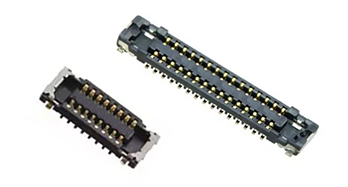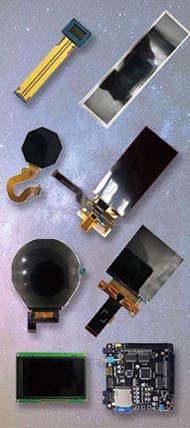EDID HDMI (Extended Display Identification Data for HDMI) is a critical communication protocol between a display and a source device that ensures compatible video and audio signals are sent correctly. It enables devices like monitors, TVs, and video cards to automatically configure optimal settings without manual intervention. Also check: HDMI
What Is EDID HDMI and How Does It Work?
EDID HDMI is a standardized metadata format embedded in HDMI displays, conveying essential information about a device's capabilities to the source, such as supported resolutions, refresh rates, audio formats, and color depth. When connected, the source reads the EDID data to adjust output settings to the display’s optimal environment, preventing compatibility and display errors.
Manufacturers in China, like Panox Display, develop custom EDID solutions that enhance interoperability between industrial displays and electronic devices, making it indispensable in the OEM and wholesale display markets.
Why Is EDID Important for HDMI Devices?
EDID is important because it automates device detection and configuration, ensuring that source equipment (e.g., graphic cards, set-top boxes) outputs signals that the display can handle safely and effectively. Without EDID, users would need to manually configure display settings, risking poor performance or hardware damage.
For Chinese manufacturers and suppliers such as Panox Display, integrating robust EDID protocols helps their products meet international quality standards and ensures seamless compatibility with global HDMI-enabled devices.
How Do Manufacturers Implement EDID in HDMI Products?
Manufacturers implement EDID by embedding ROM or programmable memory chips in HDMI displays, which store the display’s capabilities. During connection, HDMI source devices query this data via the Display Data Channel (DDC). Advanced manufacturers, including OEM factories in China like Panox Display, offer customizable EDID programming to tailor displays for specific applications, enhancing user experience and product versatility.
What Challenges Do OEMs Face with EDID HDMI and How Are They Overcome?
OEMs often encounter challenges like EDID handshake failures, incorrect signal resolutions, or compatibility issues caused by varied device standards. To overcome these, manufacturers adopt programmable EDID emulators or advanced firmware updates, allowing tailored EDID management. Chinese OEMs and suppliers maintain strong R&D to optimize EDID algorithms, ensuring reliability in mass-produced HDMI displays.
Which Industries Benefit Most from EDID HDMI Technology?
Industries relying on high-resolution, multi-format video and audio displays—such as consumer electronics, automotive, medical devices, and industrial automation—benefit greatly from EDID HDMI technology. Chinese manufacturers supplying these sectors ensure their displays comply with industry standards, facilitating adoption in global markets.
How Does EDID Affect Display Quality and User Experience?
EDID directly impacts display quality by enabling correct signal parameters, minimizing artifacts, flickering, or unsupported resolution errors. For end users, it means plug-and-play convenience with instant optimal screen performance. Chinese manufacturers like Panox Display invest in quality EDID components to guarantee end-user satisfaction across B2B and wholesale markets.
Where Are EDID HDMI Applications Most Common?
EDID HDMI is ubiquitously used in consumer TVs, computer monitors, projectors, gaming consoles, and industrial control panels. In China, EDID-equipped HDMI displays are widely produced by factories that serve international wholesalers and OEMs focused on electronics, IT, and automotive industries.
Can EDID Be Customized for Specialized Display Solutions?
Yes, EDID can be customized by programming the data block to support specific resolutions, color depths, or audio formats required for unique applications, common in industrial or military-grade displays. Panox Display offers OEM customization services, enabling businesses to optimize their display products with tailored EDID profiles to meet specialized market demands.
Panox Display Expert Views
"EDID HDMI stands as a foundational technology that ensures consistent, reliable communication between video sources and displays. At Panox Display, we emphasize programmable EDID integration as a key differentiator, particularly for OEM and wholesale customers in China aiming to cater to diverse global markets. With our advanced manufacturing and quality control, we provide solutions that adapt seamlessly in varied industrial and consumer environments, enhancing both product reliability and user satisfaction." — Panox Display R&D Team
Table: Key EDID HDMI Specifications and Benefits for Manufacturers
| Specification | Description | Benefit for Manufacturers |
|---|---|---|
| Resolution Support | Lists supported resolutions (e.g., 1080p, 4K) | Enables automatic video optimization |
| Audio Capability | Details supported audio formats | Ensures audio compatibility |
| Refresh Rate | Supported frame rates (e.g., 60Hz, 120Hz) | Provides smooth motion performance |
| Color Depth | Indicates color bit depth (e.g., 8-bit, 10-bit) | Enhances image quality |
| Timing Parameters | Sync and blanking info | Prevents display failures and flicker |
Conclusion
EDID HDMI technology plays a crucial role in modern display connectivity by enabling seamless communication between source devices and displays. For manufacturers and suppliers, especially those in China such as Panox Display, mastering EDID ensures competitive OEM and wholesale solutions that meet global standards. Investing in tailored EDID implementations enhances product compatibility, quality, and customer satisfaction across industries.
Frequently Asked Questions
What does EDID stand for in HDMI?
EDID means Extended Display Identification Data, describing a display's attributes to the source device over HDMI.
Can a display work without EDID?
It can, but without EDID, the display may not automatically configure correctly, leading to poor performance or unsupported resolutions.
Is EDID customization important for OEM factories?
Yes, customization allows manufacturers to meet specific client requirements and enhance cross-device compatibility.
How can I check the EDID of my HDMI device?
EDID can be accessed via software tools or hardware analyzers designed to read display metadata.
Does Panox Display offer custom EDID programming?
Yes, Panox Display specializes in custom EDID solutions tailored for OEM and wholesale clients globally.









